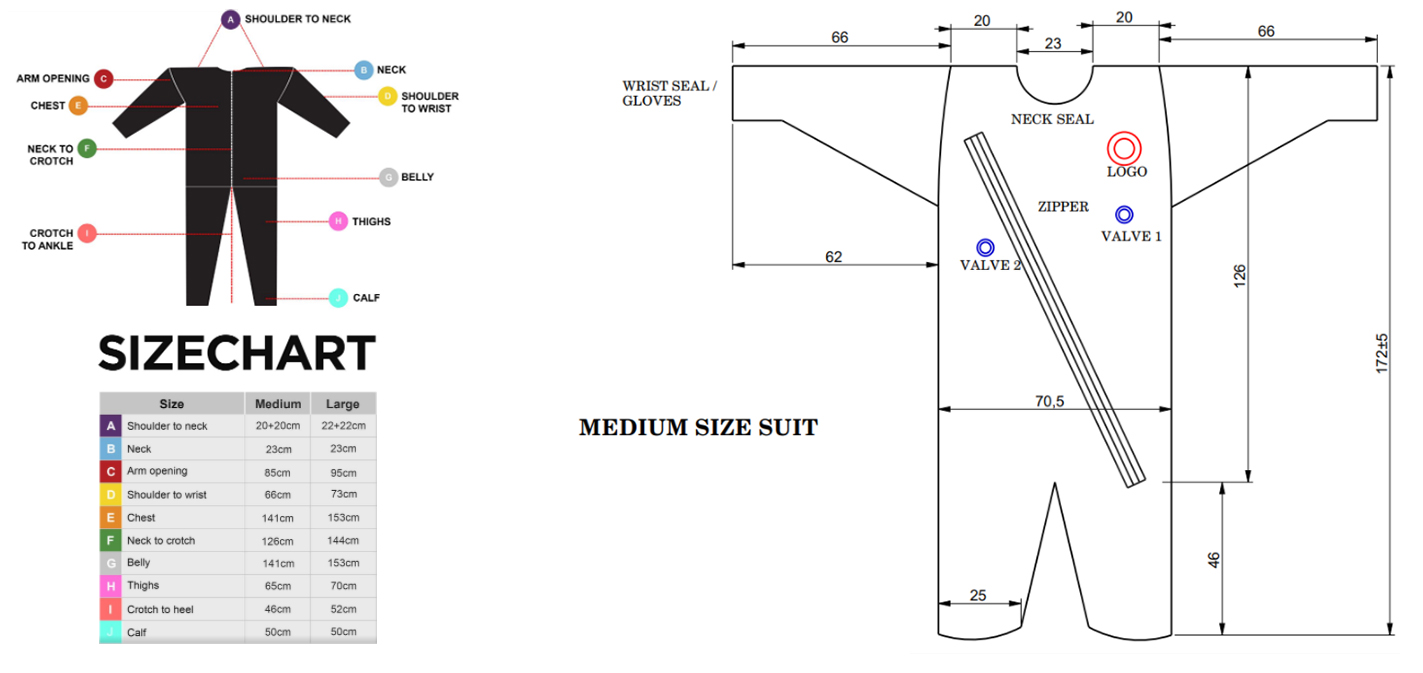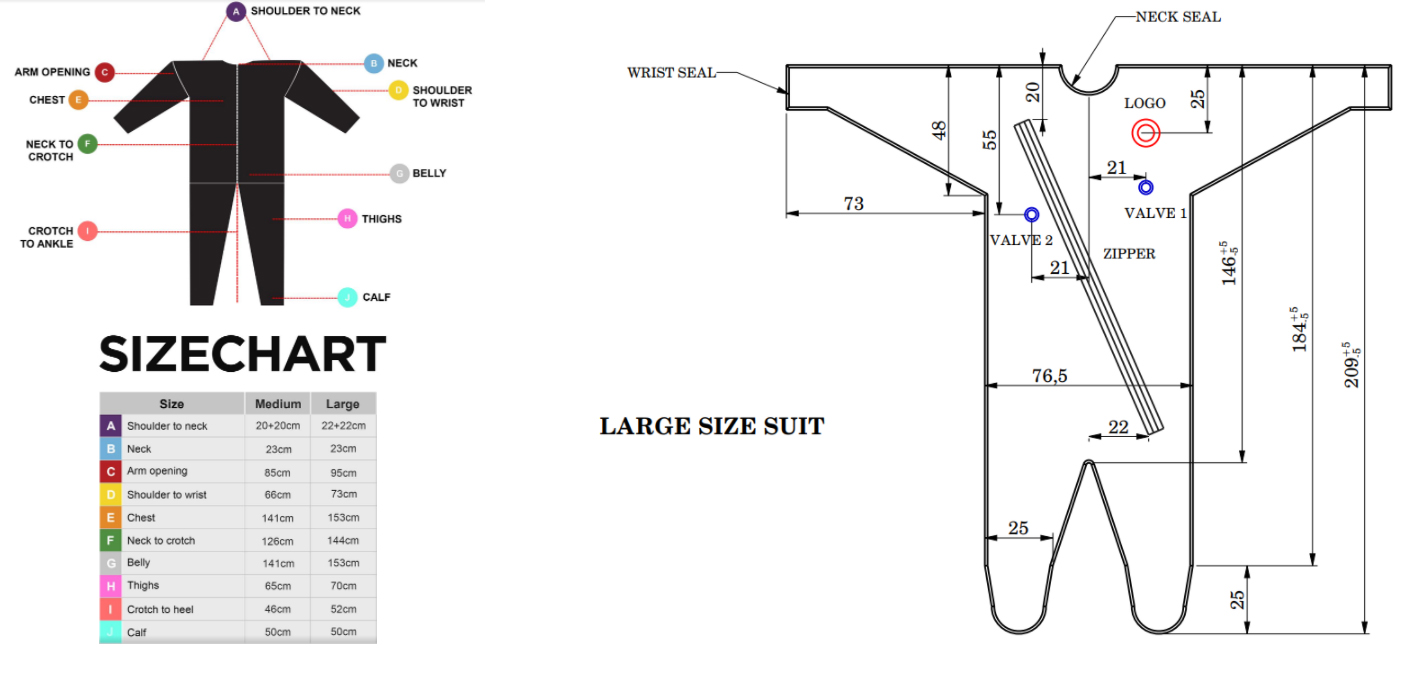WHY CARBON DIOXIDE?
When we inhale we take in oxygen, which is used to produce energy (ATP) efficiently. In this process of manufacturing energy, which is called metabolism, our body also produces heat, water, and carbon dioxide. The excess carbon dioxide is exhaled. However, if we are stressed, our breathing will increase and we will exhale too much CO2. If we are inactive, our metabolism will decrease, and less CO2 is produced. Combining the two, stress and inactivity, has a double negative effect resulting in lower levels of carbon dioxide in our body. Since carbon dioxide has many important properties in our body, we may experience health challenges when the CO2 levels go down. One effect of CO2 is that it creates vasodilation, which allows greater blood flow to the cells, which in turn means increased oxygen delivery and improved removal of waste products. The heart will have to work less hard to pump the blood through your circulatory system, and this will activate the parasympathetic nervous system, which creates a state of relaxation throughout the entire body.
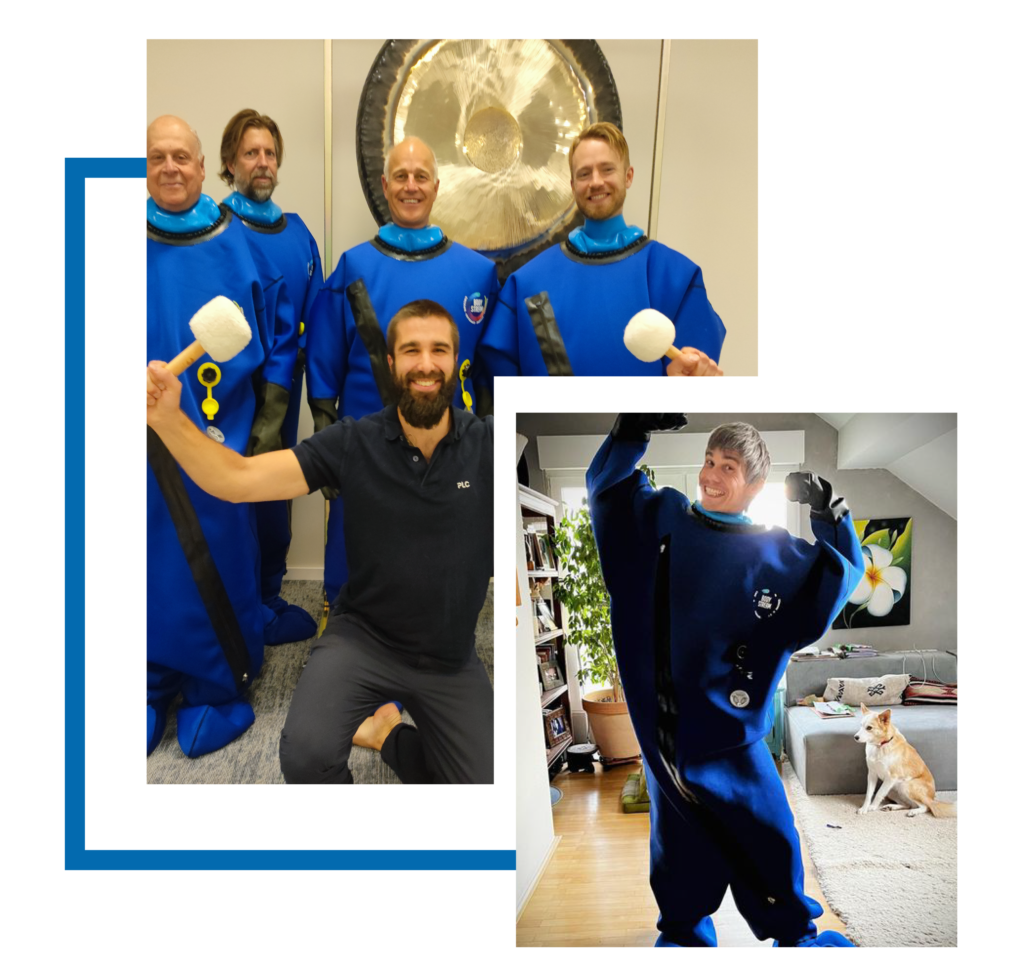
TWO WAYS TO PAY
PAY WITH CARD
$
2000
MONTHLY FINANCING
$
84
/month
Based on 24-Month Financing Eligibility
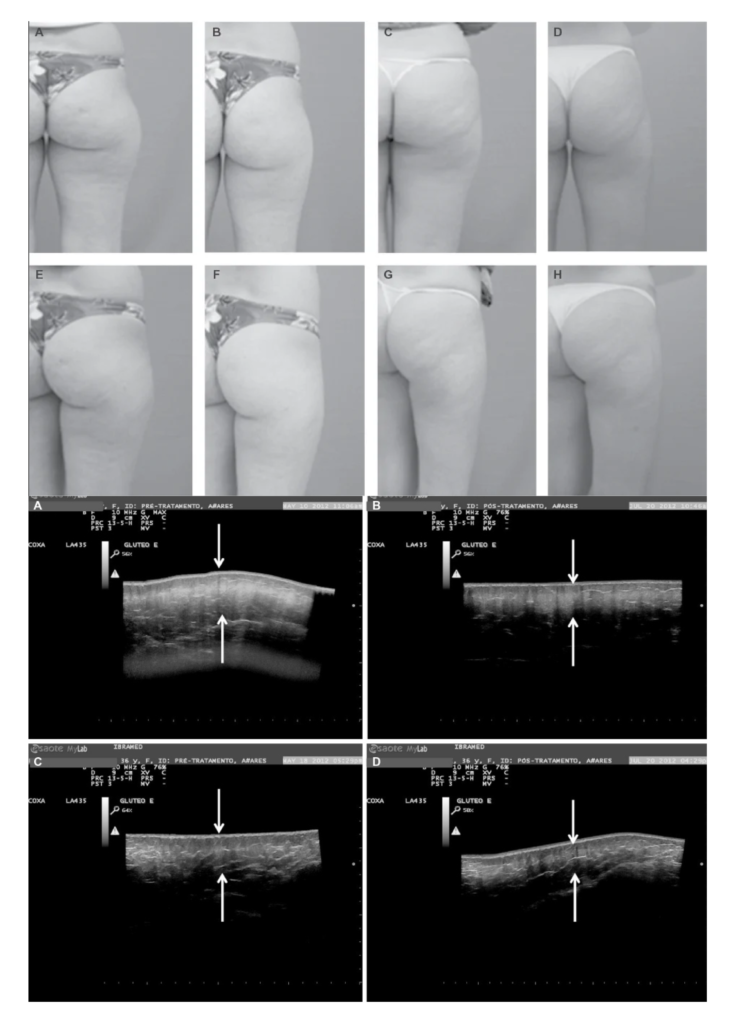
PHOTOS FROM THIS STUDY USING CARBOXYTHERAPY FOR CELLULITE.
Comparison of gluteal region before and after treatments.
A and C are before the carboxytherapy treatment and B and D are 7 days after the last treatment.
Results: After the treatment, there was a significant reduction (P=0.0025) of the cellulite from degree III to degree II, and this improvement had correlation with the improvement in the organization of the fibrous lines and the disposal of adipose tissue lines of the treated regions observed through the panoramic ultrasound images diagnosis.
Conclusion: Carboxytherapy is an effective technique of treatment of cellulite in the
buttocks region and posterior thighs of healthy women.

BENEFITS OF USING THE BODYSTREAM

Increase in energy

Anti-Aging

Reduced Stress and Anxiety
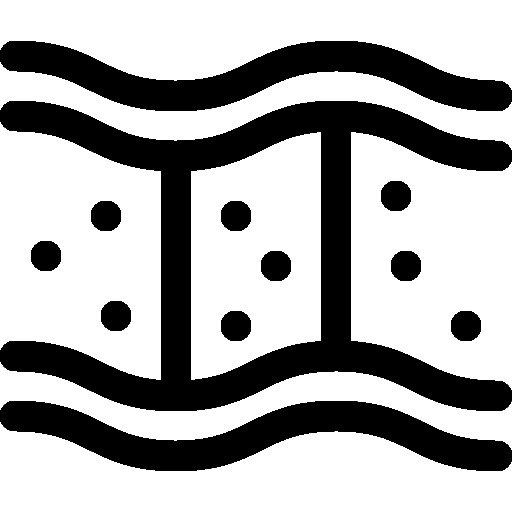
Reduction in cellulite

Faster healing of wounds

Reduction in body pain

Improved skin quality

Increased microcirculatio

Increased metabolic rate and fat burning

Firmer and more youthful skin on the entire body

Reduction of cellulites, spider veins and varicose veins
CARBON DIOXIDE THERAPY IN THE TREATMENT OF CELLULITE: AN AUDIT OF CLINICAL PRACTICE
Results –
A total of 101 women underwent abdominal therapy (Table 1). A significant reduction in upper, mid, and lower abdomen circumference occurred in all three age groups: respectively, 1.8 ± 0.5, 1.6 ± 0.4, and 2.1 ± 0.3 cm in the 20- to 29-year-old group, 1.6 ± 0.4, 2.3 ± 0.3, and 2.1 ± 0.3 cm in the 30- to 39-year-old group, and 2.0 ± 0.4, 2.5 ± 0.4, and 2.6 ± 0.4 cm in the 40- to 50-year-old group. For the 10 men who underwent the same therapy, the fall in abdominal circumference was not significant. For the 57 women who underwent thigh therapy (27 in the 20- to 29-year-old group, 18 in the 30- to 39-year-old group, and 12 in the 40- to 50-year-old group), thigh circumference was significantly reduced respectively in the right versus left thigh 1.6 ± 0.3 versus 1.5 ± 0.2 cm, 1.1 ± 0.3 versus 1.1 ± 0.3 cm, and 1.6 ± 0.3 versus 1.5 ± 0.4 cm.
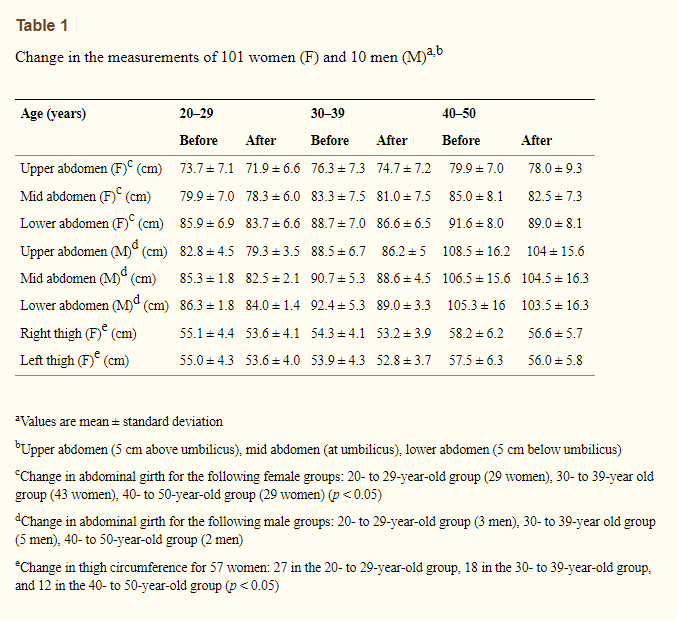
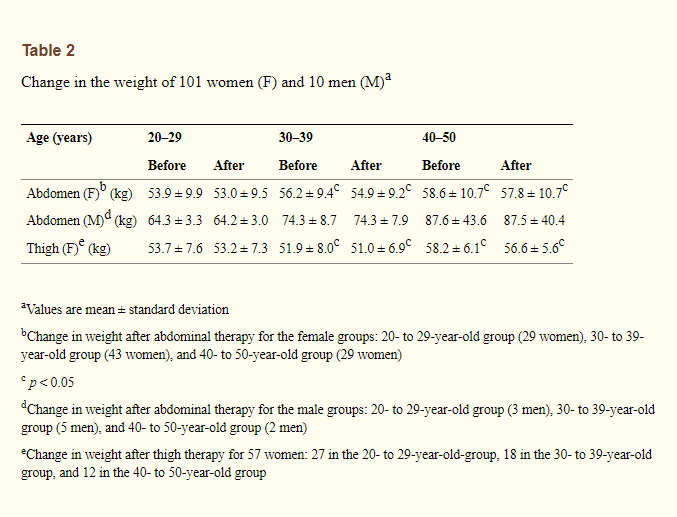
Ultrasound examination of the abdomen showing measurement of subcutaneous fat befor and after carbon dioxide therapy. The subepidermal thickness is reduced.
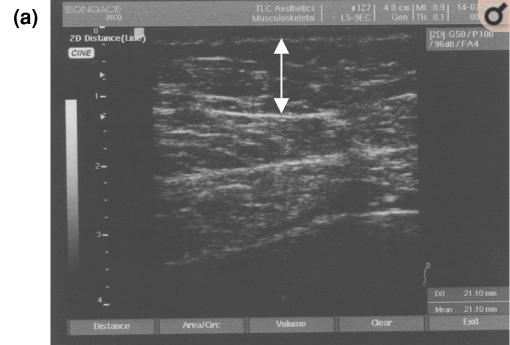

WHAT IS THE BODYSTREAM?
CARBON DIOXIDE THERAPY FOR CELLULITE
FOR WHAT CAN THE BODYSTREAM BE USED?
The BodyStream improves overall cellular health on all levels so it may be used to improve health and outcome in a wide variety of health conditions. It may be used for skin wound healing or it may be the soft tissue, or even the joint. Carbon dioxide baths have been known to reduce body pain, increase metabolic rate and fat burning, increase in energy and for firming, softer and more youthful looking skin. Even if you have no health issues currently you can use it to take your health to the next level, have more energy, recover from fatigue faster and increase your overall vitality. Exposing the body to carbon dioxide, increases oxygen delivery to muscles, organs, brain, and more; it dilates arteries to increase blood flow, helps dissolve more fat, and is a powerful treatment for dozens of ailments.
WHEN DO I USE THE BODYSTREAM?
FOR DIFFERENT HEALTH ISSUES
- Pain
- Inflammation and swelling
- Muscle Soreness
- Lymphatic problems
- Low Energy
- Poor circulation
- Sleeping problems
- Weight loss and toning
IN STRESS AND DIFFICULT EMOTION
- Stress, Worry, Anxiety, Addiction
- Cravings
BEFORE OR AFTER PHYSICAL ACTIVITY
- As a performance enhancer
- As a recovery tool
IN STRESS AND DIFFICULT EMOTION
BEFORE OR AFTER PHYSICAL ACTIVITY
Stress, Worry, Anxiety, Addiction
Cravings
As a performance enhancer
As a recovery tool
PHYSIOLOGY BASICS OF CARBON DIOXIDE
1. The Bohr Effect allows more oxygen to get to the tissues. The Bohr Effect states that the oxygen loses its affinity for hemoglobin due to the presence of carbon dioxide allowing the nearby cells to utilize oxygen more efficiently. More oxygen utilization in turn also produces more carbon dioxide.
2. How CO2 is stored in the bones. Submarine studies show that over several months they would store up to 10 pounds of CO2 in the bones. Additionally there is something called Marble Bone Disease or Osteopetrosis. It is a condition where there is a deficiency of carbonic anhydrase causing CO2 in the body to build up to higher than normal levels.
3. The body can store 120 liters of CO2, but this is mostly as bicarbonate. 120 liters is only about .48 lbs.
4. CO2 being stored in the body in carbamino groups changing the function of amino and protein groups. Carbaminos also protect cells from glycation like in diabetes, as well as from oxidative damage.
At high pH and in the presence of dissolved CO2, the N-terminus and ε-amino groups of amino acids, peptides, and proteins can form adducts with CO2, known variously as carbamino groups, carbamino acids, carbamates, carbamides, or carbo amino groups [1] C. Stadie, H.J. O’Brien
The Equilibrium of Amino Acids, Carbon Dioxide, and Carbamates in Aqueous Solution: with a Note on the Ferguson-Roughton Carbamate Method J. Biol. Chem., 112 (1936), pp. 723-758
The formation of carbamino groups alters the electrostatic properties of peptides and proteins and can have many different effects. For example,
carbamino groups can change peptide conformation [1], influence peptide degradation and receptor binding [2], and increase the neurotoxicity of amino acids [3]. Carbamino groups increase the stability of insulin dimers [4] and are required for metal binding at the active sites of ribulose-1,5-biphosphate carboxylase oxygenase (RUBISCO) [5] and urease [6]. Carbamino group formation at the N-termini changes the oxygen binding properties of hemoglobin [8, 9, 10, 11, 12] and allows hemoglobin to transport carbon dioxide [13, 14, 15]. Nearly any peptide or protein that does not have the N-terminus blocked is subject to the formation of carbamino groups
5. It’s our number one anti-inflammatory.
The results testify to the fact that CO2 is a powerful inhibitor of reactive oxygen species (ROS) generation by cells (blood phagocytes and alveolar macrophages of 96 people and cells of inner organs and tissue phagocytes (of liver, brain, myocardium, lungs, kidneys, stomach, and skeleton muscles), as well as by mitochondria of the liver of 186 white mice and human tissues.
6. CO2 directly increases the NAD+/NADH
Effect of carbonic acid concentration in blood on content of keto-acids and redox state of nicotinamide coenzymes in rabbit tissues
A rise in the level of carbonic acid in animal blood at practically unchanged pH causes an increase in the value of free [NAD+]/[NADH] and [NADP+]/[NADPH] ratios in the liver cells cytoplasm. The increase in the oxidizing power of the liver cells cytoplasm is observed against a background of a rise in both the total level of keto-acids in blood and concentration of pyruvate oxaloacetate and alpha-ketoglutarate in the liver and kidneys of animals.
Evidence points to the ability of CO2 to favor the oxidized state of the cell, directly increasing the ratio of NAD+ to NADH.
NAD+ levels decline when you age. When you are 50 years old, you have half the levels of NAD+ as you do when you are 20.
7. CO2 acting as a Lewis Acid
An unhealthy cell or cancer cell is in an overly reduced state having an excess of electrons and being more alkaline. In the presence of carbon dioxide, it acts like a Lewis Acid, withdrawing electrons from excited protons and facilitating oxygen delivery and restoring a healthy oxidative metabolism
9. CO2 has an effect on removing water from the cell and contributing to the structured jellylike state of the cell. When CO2 is formed in the cell it forms carbonic acid which is the combination of water and carbon dioxide. As it is formed, it is streamed out of the cell. Too much water in the cell causes the water in the cell to be less structured.
CARBON DIOXIDE THERAPY - A NEUROPHYSIOLOGICAL TREATMENT OF NERVOUS DISORDERS BY L.J. MEDUNA M.D PUBLISHED IN 1950.
Carbon dioxide has a direct effect on increasing your resiliency to handling stress and producing energy. Meduna in 1950 observed the following changes to nerve cells in the presence of higher co2.
1. Increase in the member potential.
2. Increase in the threshold of stimulation.
3. Increase in ability to release energy.
4. Decrease in fatigability
A more general description of the effect of CO2 upon the functional ability of the nerve is given by Lorente de No:
1. The ability of the nerve fibers to release energy which is required to maintain the flow of the demarcation current or what amounts to the same thing to withstand without failure the effect of an applied cathodal current is increased markedly by the presence of 5% CO2 in the atmosphere of the nerve.
2. CO2 increases the ability of the nerve to conduct trains of impulses because the presence of 5% CO2 in the atmosphere of the nerve noticeably delays the appearance of the signs of failure, namely, increase of threshold, decrease of speed of conduction, decrease of the height of the spike.
Thus, it can be said that the presence of 5% CO2 increases the ability of the nerve to perform work, undoubtedly because the enzymatic mechanisms of the nerve utilize stores of metabolic energy more readily or more effectively in the presence than in the absence of a certain concentration.
The presence of CO2 in the atmosphere of the nerve not only increases the value of the membrane potential of the resting nerve, but also prevents the progressive depolarization of the nerve during tetanic stimulation.
HOW DO I USE THE BODYSTREAM?
Our BodyStream carbon dioxide dry bath allows you to easily bathe in an environment of 100% CO2.
The BodyStream carbon dioxide bath is very easy to use. You first vacuum out all the air and then fill the suit with 100% carbon dioxide to the desired fullness and pressure. It’s built with a neck seal and an airtight zipper to allow you to easily get into the suit, while retaining all of the CO2, ensuring that it’s at 100%.
The BodyStream carbon dioxide bath is a convenient way to cover your entire body with CO2 from your feet all the way to your neck, including your arms and hands. The CO2 dry bath allows carbon dioxide to be delivered into the body through the skin (carbon dioxide is easily absorbed through the skin).
CO2 EFFECT ON PHYSIOLOGY - SCIENTIFIC STUDIES
- The inefficient healing of chronic wounds is a result of poor blood perfusion at the wound and surrounding tissues.
- During CO2 therapy the LD flux in the studied extremity increased from 5.8 PU ± 3.9 PU to 30.3 PU ± 16.7 PU
- CONCLUSIONS: Our results confirm a local vasodilatory effect of applied CO2 therapy.
- Diabetic foot. It is the most common foot injury in diabetic patients and can lead to lower-extremity amputation.
- Carboxytherapy refers to the subcutaneous injection of CO2 to improve the microcirculation and promote wound-healing by stimulating the microcirculation
- The results showed that this treatment that included carboxytherapy promoted wound-healing and prevented amputation.
- In their study, 42 patients were divided into three groups: A, B, and C.
- In Group A, only liposuction was performed.
- In group B 3 weeks after liposuction CO2 therapy was administered in two weekly subcutaneous applications of CO2 for 10 consecutive weeks.
- This study has shown that with CO2 therapy to obtain improvement in skin irregularity and cutaneous elasticity is possible.
- Our study has shown the positive response to reduced fat accumulation.
- This was confirmed by analysis of the results obtained by measurement of thigh circumference in group B than in group A.
“It seems essential to use procedures stimulating the production of collagen, such as radiofrequency, intense light source, LED light (light-emitting diode), IR (infrared light), laser treatments, and chemical peels in activities aiming to improving skin elasticity. Nevertheless, none of these treatments has long-lasting effects related to the improvement of skin microcirculation which seems to be a factor necessary for proper functioning of various cells, including fibroblasts. It has been demonstrated that carboxytherapy improves cutaneous circulation, which is mirrored by overall improvement of skin function.
Mitochondrial dysfunction is a hallmark of metabolic decline during aging. Chini and colleagues found that cells consume less oxygen, have increased lactate levels, and possess irregular mitochondria (Camacho-Pereira et al., 2016). (CD38 Dictates Age-Related NAD Decline and Mitochondrial Dysfunction through an SIRT3-Dependent Mechanism. Camacho-Pereira J, Tarragó MG, Chini CCS, Nin V, Escande C, Warner GM, Puranik AS, Schoon RA, Reid JM, Galina A, Chini EN Cell Metab. 2016 Jun 14; 23(6):1127-1139.
- (1) the gene expression of PGC-1α, silent mating type information regulation 2 homologs 1 (SIRT1) and VEGF, and increased the number of mitochondria, as proven by real-time PCR and immunohistochemistry,
- (2) muscle fiber switching in the TA muscle, as proven by isolation of myosin heavy chain and ATPase staining.
- Injured muscle fibres were completely repaired at week six in the CO2-treated group but only partially repaired in the untreated group.
- expression levels of genes and proteins related to muscle protein synthesis were significantly higher in the CO2-treated group
- significantly more capillaries four weeks after injury.
- CO2 therapy improved limited-extension ROM in the prevention group at 2 weeks (22° ± 2°) and 4 weeks (29° ± 1°) and in the treatment group at 2 weeks
- Muscular factors decreased in treated rats in the prevention group at 2 weeks (8° ± 2°) and 4 weeks (14°± 1°) and in the treatment group at 2 weeks (14 ± 1°) compared with untreated rats (15° ± 1°, 4.85-9.42; 16° ± 1°, 1.24-3.86; and 17° ± 2°, 1.16-5.34, respectively; all p < 0.05).
- We reported that carbon dioxide (CO2) water bathing accelerates skeletal muscle regeneration
- MyoD and myogenin play roles in muscle regeneration
- Tap water and CO2 (1,000 ppm) water bathing were performed at 37 °C for 30 minutes once a day.
- Laser Doppler perfusion imaging demonstrated that the blood flow in the fractured limb was significantly greater at weeks 2 and 3 in the CO2/hydrogel group
- (p < 0.05; 95% CI for the difference, 8.4% to 22.4% and 6.7% to 19.0%, respectively).
- Gene expression of chondrogenic, osteogenic, and angiogenic markers was significantly greater in the CO2/hydrogel group at several time points.
- Radiographically, bone healing rate was significantly higher in the CO2 group than in the control group at 4 weeks (18.2% vs. 72.7%).
- The ultimate stress, extrinsic stiffness, and failure energy were significantly greater in the CO2 group than in the control group at 4 weeks
- Gene expression of vascular endothelial growth factor in the CO2 group was significantly greater than that in the control group at 3 weeks
- The fracture union rate was significantly higher in the 3w-CO2 group than in the control group (p < 0.05). Histological assessment revealed promotion of endochondral ossification in the 3w-CO2 group than in the control group. In the biomechanical assessment, all evaluation items related to bone strength were significantly higher in the 3w-CO2 group than in the control group
- CONCLUSIONS: The present study, conducted using an animal model, demonstrated that continuous carbon dioxide application throughout the process of fracture repair was effective in enhancing fracture healing.
- RESULTS: Nineteen patients were subjected to complete analysis. No adverse events were observed. Arterial and expired gas analyses revealed no adverse systemic effects including hypercapnia. The mean ratio of blood flow 20 min after CO2 therapy compared with the pre-treatment level increased by approximately 2-fold in a time-dependent manner.
- CONCLUSIONS: The findings of the present study revealed that CO2 therapy is safe to apply to human patients and that it can enhance blood flow in the fractured limbs.
- Muscle weight was significantly higher in the CO2 group than in the control group.
- Histological analysis revealed that the muscle fiber cross-sectional area was reduced in both groups. Nevertheless, the extent of atrophy was lesser in the CO2 group.
- Muscle fibers in the control group tended to change into fast muscle fibers. Vascular staining revealed that more capillary vessels surrounded the muscle fibers in the CO2 group
- The acceleration of nerve regeneration remains a clinical challenge.
- Scores for the sciatic function index and pinprick test were significantly higher in the CO2 group than control group.
- The muscle wet weight ratios of the tibialis anterior and soleus muscles were higher in the CO2 group than control group.
- Electrophysiological examination showed that the CO2 group had higher compound motor action potential amplitudes and shorter distal motor latency than the control group.
- Exogenous CO2 by transcutaneous delivery promotes muscle fibre-type switching to increase endurance power in skeletal muscles.
- Running performance improved over the treatment period in the CO2 group, with a concomitant switch in muscle fibres to slow-type.
- The mitochondrial DNA content and capillary density in the CO2 group increased.
- CO2 was beneficial for performance and muscle development during endurance exercise
- Hyperglycemia impairs oxidative capacity in skeletal muscle.
- Transcutaneous carbon dioxide (CO2) enhances PGC-1α expression in skeletal muscle.
- These results indicate that transcutaneous CO2 improves impaired muscle oxidative capacity via enhancement of eNOS and PGC-1α-related signaling in the skeletal muscle of rats with hyperglycemia.
- Previous studies have demonstrated that decreased mitochondrial biogenesis is associated with cancer progression.
- In mitochondrial biogenesis, peroxisome proliferator-activated receptor gamma coactivator-1 alpha (PGC-1α) regulates the activities of multiple nuclear receptors and transcription factors involved in mitochondrial proliferation.
- Previously, we showed that overexpression of PGC-1α leads to mitochondrial proliferation and induces apoptosis in human malignant fibrous histiocytoma (MFH) cells in vitro
- Hypoxia plays a significant role in cancer progression, including metastatic bone tumors.
- We previously reported that transcutaneous carbon dioxide (CO2) application could decrease tumor progression through the improvement of intratumor hypoxia.
- In vivo results by μCT revealed that bone destruction was suppressed by transcutaneous CO2
- Despite substantial improvements in surgery and chemotherapy, metastasis remains a major cause of fatal outcomes
- increases expressions of hypoxia inducible factor (HIF)-1α, matrix metalloproteinase (MMP)-2 and MMP-9, and can induce invasiveness
- As we previously showed a novel transcutaneous CO2 application to decrease HIF-1α expression and induce apoptosis in malignant fibrous histiocytoma, we hypothesize that transcutaneous CO2 application could suppress metastatic potential of osteosarcoma by improving hypoxic conditions.
- present study, we investigated the relationship between the duration, frequency, and treatment interval of transcutaneous CO2 application and antitumor effects in murine xenograft models
- Murine xenograft models of three types of human tumors (breast cancer, osteosarcoma, and malignant fibrous histiocytoma/undifferentiated pleomorphic sarcoma)
- apoptosis was significantly induced by CO2 treatment for ≥10 min, and a significant decrease in tumor volume was observed with CO2 treatments of >5 min.
- However, previous studies have not determined the sequential mechanism by which transcutaneous CO2 suppresses growth of epithelial tumors, including SCCs.
- In this study, we examined the effects of transcutaneous CO2 on cancer apoptosis and lymphogenous metastasis using human SCC xenografts.
- Our results showed that transcutaneous CO2 affects expressions of PGC-1α and TFAM and protein levels of cleavage products of caspase-3, caspase-9 and PARP, which relatives mitochondrial apoptosis.
- In conclusion, use of this transcutaneous CO2 gel produced changes in the dermis similar to those observed with subcutaneous injection of CO2.
- Hyrdogel enhances gas permeation through the skin.
By the age 30, oxygen levels in your skin drop by 25% and 50% by age 40. The body naturally gets its oxygen through breathing, but factors like stress, parasympathetic and sympathetic nervous system activity and availability of CO2. The body will first utilize oxygen in the major organs and lastly, go to the skin. When the skin doesn’t get enough oxygen it becomes more prone to aging, acne, redness, irritation and age spots.
The results testify to the fact that CO2 is a powerful inhibitor of reactive oxygen species (ROS) generation by cells (blood phagocytes and alveolar macrophages of 96 people and cells of inner organs and tissue phagocytes (of liver, brain, myocardium, lungs, kidneys, stomach, and skeleton muscles), as well as by mitochondria of the liver of 186 white mice and human tissues.
Carbon dioxide (CO2) influence in generation of active oxygen forms (AOF) in human mononuclear cells (blood phagocytes and alveolar macrophages) and animal cells (tissue phagocytes, parenchymal and interstitial cells of liver, kidney, lung, brain and stomach)
It was established that CO2 in concentrations similar to those in blood (5.1%, pCO2 37.5 mmHg) and at high concentrations (8.2%, pCO2 60 mmHg; 20%, pCO2 146 mmHg) showed pronounced inhibitory effect on the AOF generation in all the studied cells (usually reducing it 2 to 4 times). Those results were obtained not only after the direct contact of isolated cells with CO2, but also after the whole body exposure to CO2.
WHAT’S INCLUDED IN YOUR BODYSTREAM ORDER

BodyStream suit
BodyStream therapy suit for taking your CO2 baths
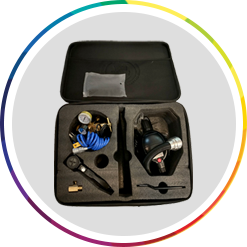
Suitcase
Holds all of the equipment

BodyStream Bag
To store and transport your
BodyStream Suit
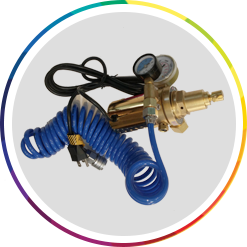
Regulator
Attaches to your CO2 tank with coiled tubing to attach to your inflation gun
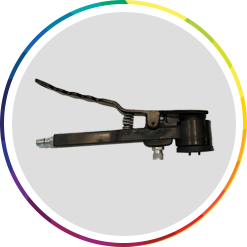
Inflation Gun
Connects to the BodyStream suit to inflate with CO2 gas from the regulator.
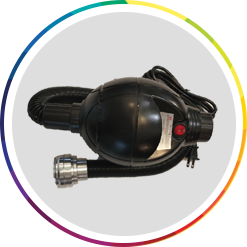
Vacuum
Vacuums out air before filling with CO2 to make sure your bath is filled with only CO2
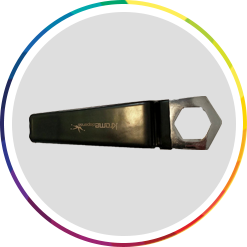
Regulator Wrench
To store and transport your
BodyStream Suit
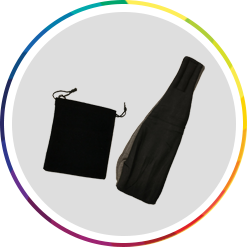
Sleep Mask
To help you relax during the
BodyStream session blocking light stimulus from entering your eyes
Choose Your Size
FREQUENTLY ASKED QUESTIONS
With any powerful therapy an individual can experience a cleansing reaction. A lot of people are stressed in life so are running off of stress hormones to generate energy. The Body Stream can help reduce stress hormones and allow you to relax more fully. This initially can make you feel more tired as you are no longer running on those stress hormones such as cortisol and adrenaline.
Body Stream is often used by those who are healthy and want to be healthier, have more energy, increase vitality and maintain youthfulness.
Normally it is between 30 minutes to 1 hour for treatment, done 3 times per week. If you have an injury or would like to accelerate the benefits you can do it daily.
The BodyStream has not been approved to treat or cure any disease or illness by the FDA or any other organization.
The BodyStream is a tool to improve general wellness and is not to be used for any disease or illness. Please consult with a qualified doctor if you need medical help.
You can get the CO2 tanks from Amazon or a local supplier at a welding supply store. Most restaurants, gas stations, convenience stores, movie theaters etc get their tanks and refills from local welding supply stores in order to provide their fountain drinks.
It is recommended to get a 20lb tank as it will last longer and be more economical. Often the cost to fill a 20lb tank is only a little more than filling a 5lb tank even though you get four times more CO2.
Normally a 20lb tank will last about 15 sessions approximately.
You just need enough CO2 so it sufficiently covers your entire body, excluding your head. Please note that you should be some extra in as your body will absorb some of it. So if you are doing an hour session then you want the amount of CO2 to last the entire time.
Make sure that the zipper is closed all of the way.
Check that the grey valve is not stuck in the open position. It is a spring valve that clicks in either the on or off position. Make sure it’s not open.
Check that the grey valve is tight.
Make sure the neck is tight enough. You don’t need is super tight but it needs to be tight enough to hold in the CO2.


